
BOOK AN ON DEMAND PASS
EXISTING USER LOGIN
This event has now taken place, dates for future events to be announced soon!
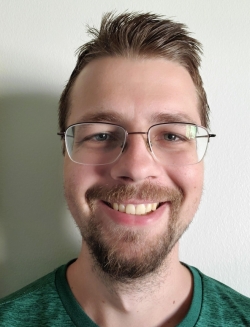
Matthew Van Gennip
product manager
A&D Technology
USA

Synopsis: The contact condition between the tires and the road surface is an essential element in the consideration of vehicle behavior. Although the contact condition changes in various ways as the tire’s attitude changes during driving, there are few examples that comprehensively demonstrate these changes. Therefore, we use a dynamic contact force measurement device to acquire data under arbitrary camber/slip conditions, and introduce changes in the contact condition in response to wheel alignment.
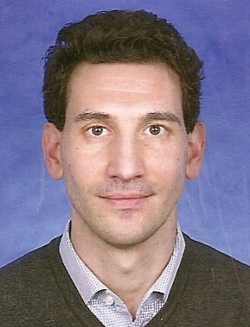
Michele Scacchi
field application engineer
Alpha Technologies UK
ITALY

Synopsis: The blow-point transition of rubber compounds is investigated by rheological techniques during curing. Oscillatory shear experiments and cavity gap thickness determination are performed during isothermal curing. Rheological measurements reveal that the initial stages of cross-link formation produce a sol-gel transition. In this study we show that the formation of a polymer network at the critical gel point is strictly related to the thermal curing history independently of the type of rubber. We observed that times corresponding to the sol-gel transition at different temperatures are characterized by the same degree of curing and by the same die-gap variation.
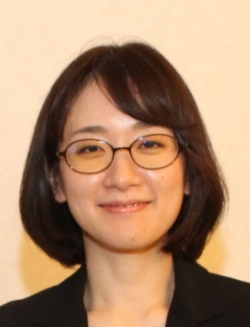
Chigusa Yamada
manager
Asahi Kasei Europe GmbH / University of Twente
GERMANY

Synopsis: Functionalized S-SBRs are used for the tire tread to improve rolling resistance (RR). The functional group that can interact with silica is introduced in the polymer to increase filler-polymer interaction. This increased filler-polymer interaction leads to a reduced filler-filler interaction and to a decreased tand at 60°C, an indicator for RR. The detailed mechanism of functionalized S-SBRs is still not clear. Therefore, the current study compares the silica compounds with several SBRs that have different types of functional groups, to better understand this mechanism, focusing particularly on filler-polymer interaction.
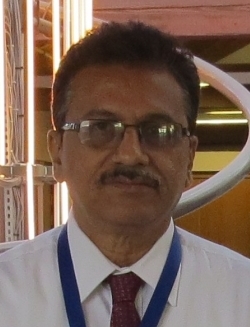
Arup Saha Deuri
head of R&D
Balkrishna Industries Ltd (BKT)
INDIA
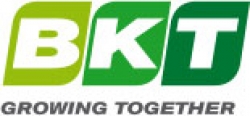
Synopsis: In order to make sustainable tires, every manufacturer is attempting to produce tires using sustainable material like castor oil, mustard oil, sunflower oil, cottonseed oil and palm olein oil instead of RAE oil. Work was undertaken on different tire components using full or partial replacement with vegetable oils; testing included endurance testing. Results show comparable results except for one or two parameters that can be improved by formulation adjustment.



Amirhossein Shahdadi
expert in technology innovation and digitization
Barez Industrial Group
IRAN

Synopsis: The need to develop new technologies in different fields of engineering is steadily growing. The purpose of this paper is to demonstrate the use of a special kind of tire known as a smart tire. A focus on improving the active safety of transportation and also the emergence of concepts such as the Internet of Things (IoT) have driven tire industries to produce this tire. Smart tires mainly consist of different sensors and continuously evaluate various parameters like pressure and temperature. These sensors constantly monitor the performance of the tire and send information to the consumer.

Gilles Moninot
global director of sustainability
Birla Carbon Europe GmbH
FRANCE

Synopsis: Many in the rubber industry are talking about sustainability in general and product circularity in particular. Is the carbon black industry making sufficient strides in proposing sustainable materials and supporting these aspirations? Birla Carbon proposes to be the game-changer to make circularity a reality with its sustainable carbonaceous materials and CONTINUA™ offering.
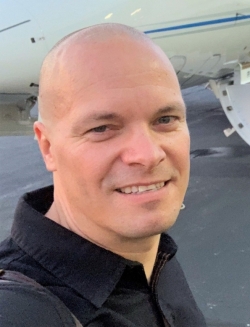
Aki Nurminen
solution manager, smart factory
Black Donuts Engineering Inc
FINLAND

Synopsis: Tire manufacturing is undergoing a digital transformation. However, although digitally smart manufacturers are gaining a competitive advantage, many are still hesitant to take a digital leap. One of the main obstacles to digitalization is the uncertainty about how this new, major investment will pay off. With so many technology options available, it can be hard to calculate the best path forward. The effects on sales and profitability are hard to measure, which complicates the task of ranking investment priorities. Let’s take a look at new technology through the lens of profitability. Where can well-orchestrated digitalization improve processes? How does it translate into revenue and business value?
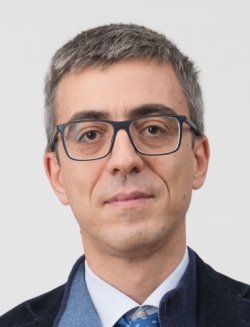
Raffaele di Ronza
R&D open innovation expert
Bridgestone EMIA
ITALY
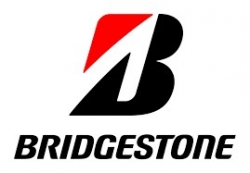
Synopsis: Partnership and an open innovation approach are key if we are to ensure the sustainable future of mobility. Co-developed by Bridgestone, Arlanxeo and Solvay, Techsyn is a tire technology platform that combines chemically optimized synthetic rubber with tailor-made silica, interacting at a molecular level, to create tires that deliver unrivaled strength and environmental performance – up to 30% better wear efficiency and an up to 6% reduction in rolling resistance compared with conventional Bridgestone EMIA summer products – with no trade-offs. As a result of these improvements, Techsyn augments the sustainable performance of the tires it is applied to by reducing fuel consumption and CO2 emissions (relating to rolling resistance coefficient (RRC), which is measured in Bridgestone’s indoor labs) and enhancing tread mileage (wear performance has been evaluated by Bridgestone’s outdoor tests on 205/55R16 vs reference Bridgestone consumer summer tires).
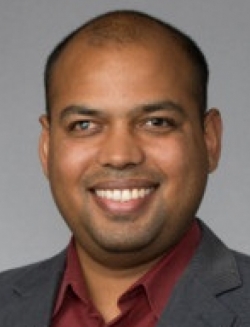
Aatif Misbah
vice president, global marketing and strategy
Cabot Corporation
USA

Synopsis: At Cabot, we believe that long-term success requires a commitment to sustainability in its broadest form. Sustainable processes and actions help us avoid the depletion of natural resources, maintain an ecological balance and improve quality of life. In this presentation we share how carbon black plays an important role in improving daily life, and how Cabot is relentlessly pursuing solutions to the sustainability challenges of our customers, our communities and our world. We also talk about Cabot’s progress with its mindset of continuous improvement in carbon black production and which innovations will fuel the future of sustainable carbon blacks.
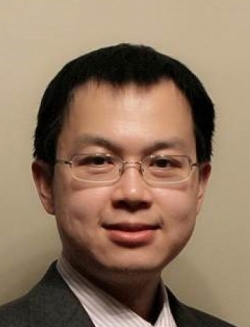
Limeng Chen
R&D manager
Cabot Corporation
USA

Synopsis: Conventional reinforcing materials provide well-known benefits to tire performance by enhancing durability, safety and efficiency. Cabot continues to innovate in this space to expand the performance envelope and design space for customers. In this presentation, we will explore a new class of rubber compounds and concentrates prepared using three-dimensional reinforcing agents known as carbon nanostructures (CNS). CNS are a unique network of cross-linked carbon nanotubes that can deliver performance gains at very low loading.
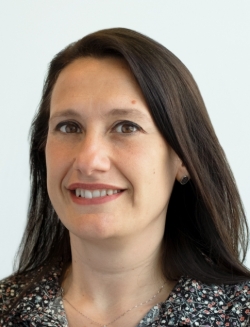
Daniela Sordi
chief technology officer
CarbonX
NETHERLANDS

Synopsis: High-silica loaded systems are designed to improve rolling resistance and maximize fuel efficiency, but typically experience limitations in abrasion resistance. Using carbon blacks can improve abrasion resistance but it comes at the cost of fuel efficiency and grip. CarbonX already defied convention by improving all three parameters at the same time when it was used to substitute N375, and these results were amplified when CarbonX was used to partially substitute silica as well as carbon black. This presentation explains how CarbonX was able to simultaneously improve rolling resistance (13%), abrasion resistance (21%) and wet grip (6.5%), and how CarbonX can help tire makers meet increasing demands for higher performance and sustainability, ultimately contributing to the overall reduction of CO2 and particle emissions.
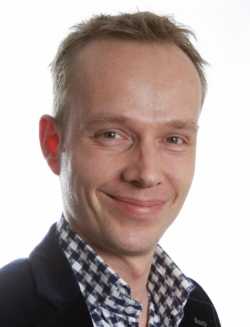
Gert Nomden
digital factory consultant
Cards PLM Solutions BV
NETHERLANDS
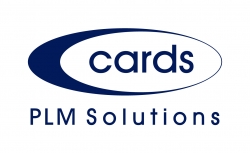
Synopsis: The use of material flow simulation tools is slowly becoming the standard in the tire manufacturing industry. These tools should be part of the complete tire plant lifecycle, to continuously optimize plant performance. This can be achieved by using simulation libraries that are prepared for IoT and ready to integrate with commonly used systems, such as a PLC and MES. We will give an overview of the possible uses of material flow simulations in tire manufacturing. Additionally, we will give practical guidance on how to make these simulations fit for the complete lifecycle of a tire plant.

Rajvardhan Nalawade
research assistant
Center for Tire Research, Virginia Tech
USA
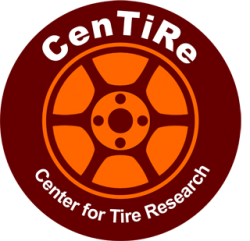
Synopsis: Virtual sensing of roads using accelerometers inside the tire is being actively explored in the tire and automotive industries, owing to its multitude of applications and advantages. In addition to characterizing road surfaces and their conditions, the virtual sensing of the tire-road interaction can be leveraged to understand the current state of the vehicle. At the Center for Tire Research (CenTiRe), we have successfully developed and implemented data-driven algorithms for estimating tire normal load, vehicle velocity and characterizing the structure-borne noise due to tire-pavement interaction. Estimating such parameters using advanced data processing is a stepping stone toward accurate control algorithms and increased safety of vehicles. In this presentation we will explore these estimation algorithms.
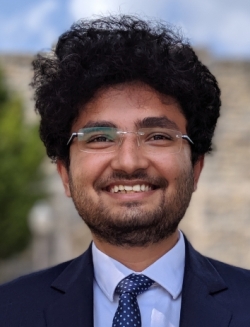
Utkarsh Gupta
research assistant
Center for Tire Research, Virginia Tech
USA
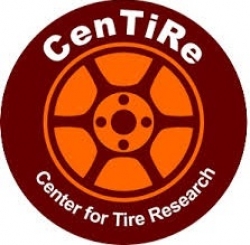
Synopsis: Virtual sensing of roads using accelerometers inside the tire is being actively explored in the tire and automotive industries, owing to its multitude of applications and advantages. In addition to characterizing road surfaces and their conditions, the virtual sensing of the tire-road interaction can be leveraged to understand the current state of the vehicle. At the Center for Tire Research (CenTiRe), we have successfully developed and implemented data-driven algorithms for estimating tire normal load, vehicle velocity and characterizing the structure-borne noise due to tire-pavement interaction. Estimating such parameters using advanced data processing is a stepping stone toward accurate control algorithms and increased safety of vehicles. In this presentation we will explore these estimation algorithms.
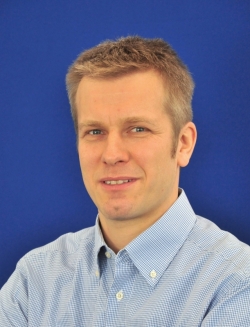
Jan Sommer
team leader sales in laser applications
Clean-Lasersysteme GmbH
GERMANY

Synopsis: Clean-Lasersysteme was the first supplier of automated and hand-guided tire mold cleaning systems. Various customers worldwide use this technology today. For years, the laser has also been used for the adhesive pretreatment of the inner tire for bonding of sensors. The process was developed in cooperation with Continental Hannover. Furthermore, the complete inner tire can be pretreated (innerliner cleaning), for example for noise insulation or penetration sealing. The benefits are that it is a dry method with reproducible results and compact, flexible technology. A suitable processing system, as well as further applications around the tire, will be presented in the lecture.

Dietmar Juchmes
senior VP Europe and Africa sales
Cold Jet GmbH
GERMANY

Synopsis: Cleaning of tire molds is an essential part of the production process. Learn how you can control your cleaning process with Cold Jet as a system solution provider for automated and manual applications. Clean and safe with PCS and ASP-T.
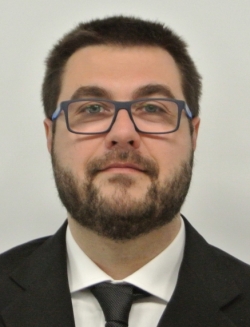
Alberto Vigano
automation engineer
Comerio Ercole SpA
ITALY

Synopsis: With the introduction of Industry 4.0, the automation and control level of rubber calendering lines has increased. The number of sensors and controls allows a step forward: automatic production management that can show production status and record technological data and process efficiency; improve line profitability with more efficient production scheduling, automatic loading of production recipes and maintenance optimization; prevent possible human errors in raw materials and semi-finished product management; show and indirectly suggest any areas for production process improvement. Comerio Ercole will present a project to integrate a rubber calendering line in the MES available in tire factories.

Ioana Nicoara
generic technical equipment standards
Continental Tires
GERMANY


Elan Amirav
manager
D&A Industrial Engineering Environmental Design
ISRAEL

Synopsis: Dynamic Section is a patented concept designed to introduce rolling resistance optimization to pneumatic tires by significantly changing the ground contact patch in response to pressure values, dynamic loads and road conditions. As the tire in the EV’s drivetrain constitutes the main link between the motor and the road, regulating rolling resistance may produce more efficiency than in the case of the ICV. Having the ability to reduce the ground contact patch while cruising, and increase it when torque resistance or higher performance are required, may generate added value for the EV’s evolution and substantially extend the battery charging range.
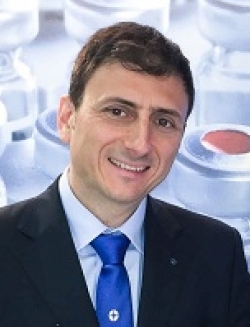
Giuseppe Centola
product marketing leader industrial automation
Datalogic Srl
ITALY

Synopsis: The presentation will provide an overview of the latest technologies to meet today’s challenging demands for seamless tire identification and full traceability. It will show how innovative solutions enable full visibility throughout all production processes, into the warehouse and alongside distribution up to the final destination.
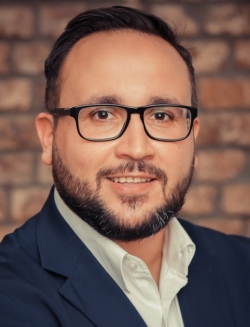
Güneri Tugcu
senior channel partner sales EMEA
Digimarc
GERMANY

Synopsis: What about an alternative to the QR code, which is less visible on tires, won’t be damaged easily and can’t be easily counterfeited by third parties? What about an identity that connects you directly with your end customers? Koenig & Bauer Coding and Digimarc will present the benefits of Digimarc Barcode, a new digital identity for the tire industry. Utilizing Koenig & Bauer Coding laser engraving systems, Digimarc can be engraved on tire sidewalls and reliably scanned by mobile phones. Digimarc can hold a variety of data, and when scanned, the data can serve a variety of use cases across the value chain for manufacturers and end customers.
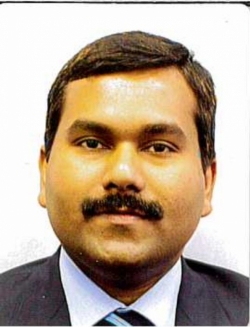
Abilash Nair
materials development manager
Dunlop Aircraft Tyres Ltd
UK

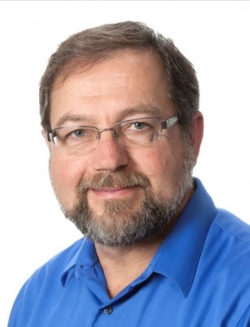
Frederick Ignatz-Hoover
technology fellow
Eastman Chemical B.V.
USA

Synopsis: Eastman has developed process-optimization methodologies utilizing thermal imaging technology and in-compound soluble sulfur analysis with statistical design of experiments. Crystex Cure Pro insoluble sulfur is an engineered product that shows dramatic improvements in flow, dispersion kinetics and thermal stability over conventional products. When Eastman process-optimization methodologies are applied to mixing or calendering operations involving Crystex Cure Pro, dramatic improvements in processing time and energy utilization have been observed. Optimized factory operations have been demonstrated showing capacity and/or energy utilization improvements in the order of 10-40%. This presentation will highlight Eastman methodologies and examples of factory-optimized processes.
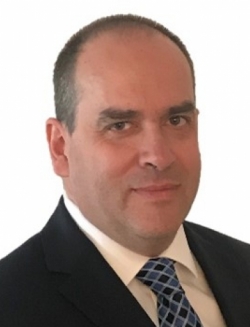


Andreas Renken
application development and technical service manager EMEA, tire additives
Eastman Chemical BV
NETHERLANDS

Synopsis: Electrification is a major trend driving the industry toward increasingly sophisticated tire and compound designs. For companies seeking to grow through differentiation, conventional compounding technology and manufacturing constraints may limit the ability to meet emerging performance needs. S12 is a performance additive engineered to enable new design and manufacturing paradigms not previously possible. This presentation will disclose recent compounding developments that demonstrate improvements in hysteresis and physical properties. Adoption of the proposed compound design schemes can help meet the emerging needs of heavier loads, increased range and better handling. S12 is a technological breakthrough that overcomes current design and manufacturing paradigms to herald the next level of tire performance.
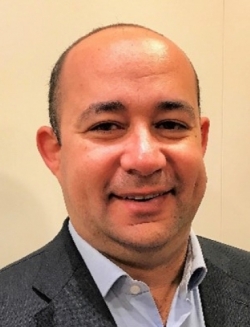


Gennaro della Vecchia
segment market manager for tire additives - performance application
Eastman Chemical BV
NETHERLANDS

Synopsis: New mobility and megatrends driving increased sustainability are challenging the tire industry and providing additional targets to meet. Tire performance requirements are increasing as well, creating the need for materials that differentiate performance and sustainability in the marketplace. This presentation will show how Eastman’s portfolio helps tire manufacturers develop more durable tires, reduce CO2 emissions with increased productivity and increase the sustainable content of tires with biobased materials – all without compromising performance.



Javier del Rio
senior application development and technical service manager for tire additives in EMEA and LATAM regions
Eastman Chemical BV
NETHERLANDS

Synopsis: For decades, companies in the tire industry have employed process limitations linked to their own productivity. Two of those constraints are associated with dispersion and thermal stability of polymer sulfur. Crystex Cure Pro was created to address the original constraints around compounds containing high-sulfur-containing compounds. As customers’ needs evolve, Cure Pro changes with them. Cure Pro is the latest generation of insoluble sulfur (IS) engineered to bring superior dispersion, high-temperature stability, and enhanced flowability. Here, we examine the application of Cure Pro in various belt formulations compared to typical Crystex OT 20 grades in addition to the niche insoluble sulfur grades like Crystex OT 33 and Crystex OT 33 AS.

Thomas Bartmann
head of sales
Efficient Energy GmbH
GERMANY
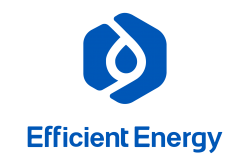
Synopsis: Companies increasingly need to focus on climate-friendly solutions for their production processes. This presentation shows you an easy way to save CO2 emissions and energy costs with clean cooling. Clean cooling means the use of natural refrigerants to cool down your processes and machines in production. We reveal plenty of benefits of using these new cooling technologies – such as using water as a refrigerant – that save money as well as our planet, and can drive your success.
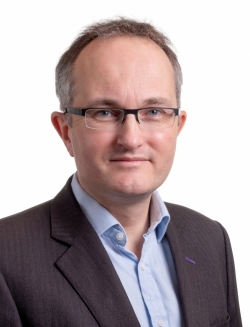
Nick Molden
chief executive officer
Emissions Analytics
UK

Synopsis: Analyzing ‘tire and road wear particles’ on a combined basis runs the risk of underestimating the environmental impact of tire wear emissions, which are likely to grow with heavier vehicles and given the chemical composition of tires. This presentation will discuss a new method for determining tire wear emissions in real-world driving conditions. The rate of wear will be related to driving dynamics to understand the link to driver behavior. Comparing multiple tire brands, the variation in rates of wear will be presented.
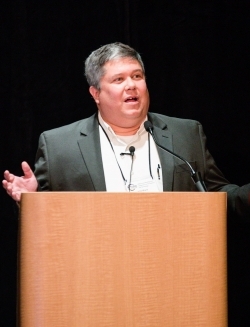
William Mars
president
Endurica LLC
USA

Synopsis: Endurica’s Incremental, Critical Plane Analysis has been applied to simulate the effects of aging on a tire’s resistance to cracking under road hazard impacts such as a curb or cleat. Aging kinetics are represented via a master curve with an Arrhenius-based time-temperature shift factor. Continuous evolution of the stiffness and crack growth rate law is considered. Simulation results show that although cracks in a new tire may operate below the intrinsic strength (i.e. fatigue threshold), over time the intrinsic strength may degrade in a time-dependent manner to the point where fatigue crack growth becomes inevitable.
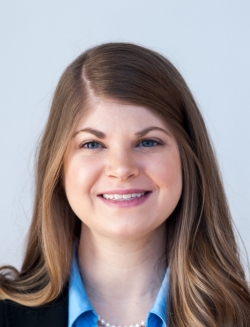
Mary Ann Abney
global technical marketing manager - process oils
Ergon Inc
USA

Synopsis: Tires are formulated with many different components designed to optimize their safety and performance. The performance demands shift depending on the end application of the tire. There are natural trade-offs, as shown by the magic triangle. Everything from the elastomer, process oil selection and filler system, to mixing, curing agents, phr loadings, etc can affect the end performance. Process oils used as extenders and/or plasticizers affect the performance of the tire tread. In this paper, we explore the impact of heavy naphthenic oil (HNO), heavy naphthenic black oil (HNBO) and treated distillate aromatic extract (TDAE) process oils.

Fazilet Cinaralp
secretary general
ETRMA
BELGIUM
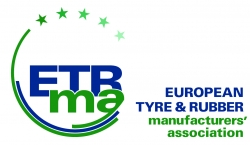
Synopsis: ETRMA and its members are advancing sustainability initiatives at all stages of the tire lifecycle. Resource conservation and fuel economy are among the focus points of tire innovations that are geared toward safer and more environmentally sound mobility options. Furthermore, the European industry proactively identifies and addresses the potential human health and environmental impacts associated with the tire lifecycle to contribute to a more sustainable future. ETRMA is long established and present in the debate. This presentation will discuss some of the areas in which the industry is most active, including innovations and sustainable sourcing of raw materials.
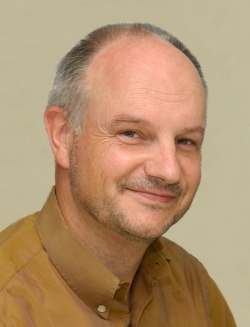
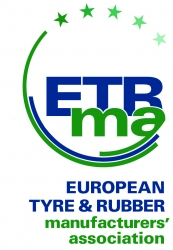

Dominique Cettour-Janet
Michelin senior fellow for tire performance evaluation and tire physics
ETRMA-ETRTO
BELGIUM

Synopsis: Tire and road wear particles released from tires during use are attracting growing interest and raising questions about their potential impact on health and the environment. The tire industry is committed to evaluating the feasibility of developing a test method that will measure the abraded mass per unit distance from passenger car tires. This paper will provide extensive information about the tire abrasion test being developed by the European tire industry.
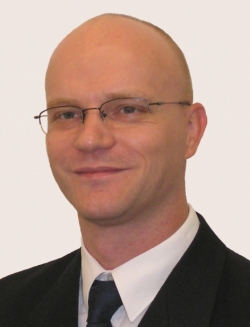
Michael Erdmann
R&D manager
Extricom Extrusion GmbH
GERMANY

Synopsis: Continuous mixing for rubber compounds offers significant advantages when compared with conventional batch-mixing systems. Extensive efforts over the past decades have been unsuccessful due to the limited mixing and temperature control capabilities of the equipment, especially at high production rates. This presentation will introduce the RingExtruder (RE) and its benefits for these applications. The fundamental machine design and resulting operating characteristics will explain how the limitations of alternative continuous mixing systems can be overcome with the RingExtruder, and compounds with outstanding properties can be produced.



Zivojin Sekulic
consultant for new technologies and tire industry
GAJ / Smarty Labs
SERBIA

Synopsis: This presentation will discuss the ‘digital transformation’ and how it is affecting the tire industry globally. Using personal experience gained in collaboration with startups from Silicon Valley, the EU and China, we will also explain how technology can be used for the transformation of the tire industry in a better way, step by step, from the R&D phase through the production phase until the sale of the tire to the end customer. A special part of the presentation will be dedicated to a Smarty Labs project for the development of smart tires.
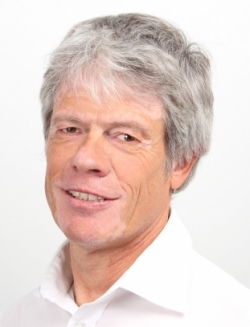
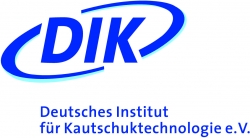

Ulrich Giese
managing director and professor at Leibniz University of Hannover
German Institute of Rubber Technology and Leibniz University of Hannover
GERMANY

Synopsis: Cellulose is a polysaccharide from renewable sources with a high potential to be used as filler material in rubbers. The application in butyl rubber-based tire compounds is of high interest because it saves weight due to low material density and also improves the permeation resistance. To realize such nanocomposites, the large and polar cellulose surface must be chemically compatible with non-polar elastomer matrices. Commercially available nanofibrillated cellulose (NFC) was characterized fundamentally as a raw material and incorporated into BIIR by means of a special latex mixing technology. Several chemical analytical techniques and physical testing were used to characterize the compound.

Stefano Savi
director
GPSNR
SINGAPORE

Synopsis: GPSNR is an international multi-stakeholder initiative formed to lead improvements in the socio-economic and environmental performance of the natural rubber value chain. Members of the platform represent the vast and complex global supply chain, from natural rubber smallholders, rubber producers, processors and traders, to tire manufacturers, end users and civil society. Further to last year’s approval of the GPSNR policy framework, GPSNR members are currently working on developing implementation guidance and reporting requirements, as well as progressing capacity-building actions driven by the platform.

Gerald Tan
CEO
HeveaConnect Pte Ltd
SINGAPORE

Synopsis: Traceability and sustainability are quickly becoming part of doing business in the tyre and natural rubber industry, with more companies seeking to better understand their supply chains and uncover sustainability risks. The industry will need new digital infrastructures to support the high volume of data generated by the supply chain. Gerald Tan, CEO of HeveaConnect, will share how HC is building an integrated suite of products to help each supply chain actor generate, analyze, and report the data needed to achieve their company’s sustainability vision.
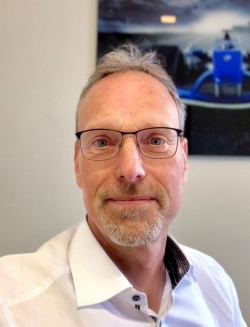
Peter Scholz
VP sales and marketing
HF Mixing Group
GERMANY

Synopsis: Maximize the positives, minimize the negatives – with a focus on safety, flexibility, quality and productivity as well as minimizing energy consumption, costs and risks. HFMG will explain how to enhance your tire production with digitalized processes and smart automated mixer solutions in your mill room. In addition, further recycling and sustainability solutions are on their way; thus, digitalized solutions and sustainable measures for tire production will be covered in this presentation.
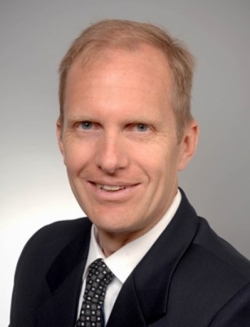
Kevin Rolfe
vice president sales and service, curing presses
HF TireTech Group
GERMANY

Synopsis: HF is a worldwide leader in the development and delivery of curing solutions for the tire industry. Using the basis of our original hydraulic column curing press, developed in the 1990s, we have since extended our offering to meet the wide range of trench requirements for the passenger car and truck markets. Join us for an overview of our PCR, TBR and PCI solutions that will provide you with the lowest overall cost of ownership. We will address the digitalization (i.e. condition monitoring) solutions that HF offers.
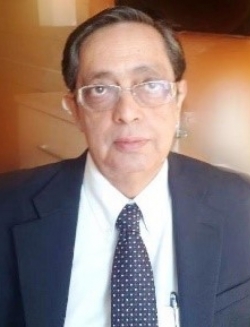


Soumen Chakraborty
director, Carbon Black Division
Himadri Speciality Chemical Ltd
INDIA

Synopsis: Secondary structure is generally measured through Oil absorption value, has major role in wettability of polymer during initial stage of mixing and have positive impact if the value is higher. Quantification of this measurement has been done through the dispersion by conductivity measurement and very high resolution optical tools indicates that higher the secondary structure, possibility of better dispersion and hence enhanced network density and rolling resistance properties.
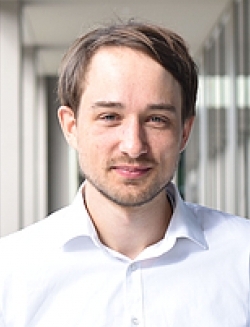


Jonas Heidelberger
scientific assistant
Institute for Dynamics and Vibration Research (IDS)
GERMANY

Synopsis: Real snow roads are exposed to changing conditions like unstable temperatures or snow. These changes have a significant influence on the snow friction of a tire tread block. We aimed to quantify the change in snow properties with a new experimental method, and to parameterize a snow model with the discrete element method (DEM). Different tire tread blocks were implemented in the parameterized DEM snow model. The results of the DEM simulation show the influence of snow properties on the snow friction of tire tread blocks.
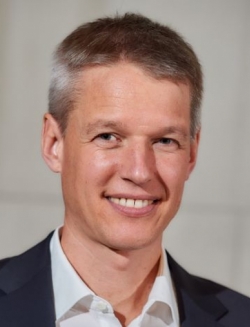
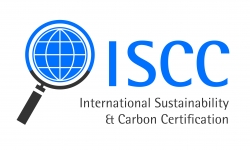

Jan Henke
director
International Sustainability and Carbon Certification (ISCC) / Meo Carbon Solutions
GERMANY

Synopsis: The circular and bio-economy is on the rise, supported by climate neutrality targets, consumer preferences and company commitments. Certification creates a link between the sustainability of raw materials and final products. The mass balance concept enables an efficient scale-up of the circular economy and bio-economy for tire manufacturers. ISCC is a sustainability certification system, governed in a multi-stakeholder process by the ISCC Association. ISCC certification covers value chains and establishes traceability, verification of volumes, types of raw materials and claims about products. The presentation provides an overview of ISCC, raw materials, products, supply chains, mass balance concepts and possible claims.
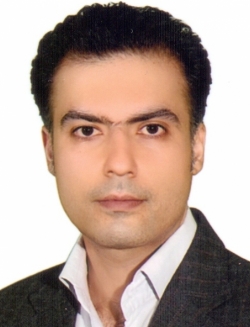
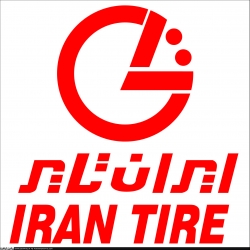

Mojtaba Bagheri Jaghargh
head of rubber engineering
Iran Tire Manufacturing Company
IRAN

Synopsis: In tire technology, polyester, nylon and steel cords are the skeleton of the tire, and their composites with the rubber skim coats are very important. Most skim coat formulations consist of high phrs of natural rubber, which is a very good choice for adhesion to reinforcing materials as well as low heat build-up and high strength. However, this is all dependent on a good mix being achieved, which is a little tricky with natural rubber in high phrs. A suitable type of natural rubber can be very helpful for the compounders.
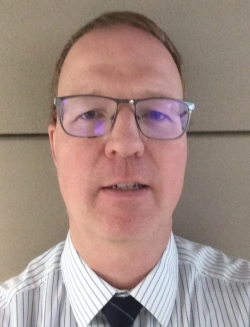
Jan Prins
technical specialist
Jaguar Land Rover
UK

Synopsis: The presentation will outline the latest developments in wheel and tire modeling at Jaguar Land Rover. It will provide an update on progress made since the last presentation some years ago. A lot of progress has been made, particularly with respect to CAE supporting tire development.
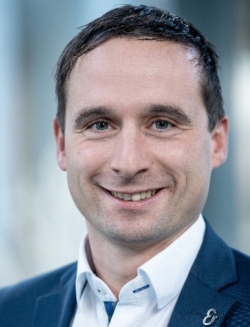


Thomas Vollmuth
department manager - key accounts and OEM management
Koenig & Bauer Coding GmbH
GERMANY

Synopsis: What about an alternative to the QR code, which is less visible on tires, won’t be damaged easily and can’t be easily counterfeited by third parties? What about an identity that connects you directly with your end customers? Koenig & Bauer Coding and Digimarc will present the benefits of Digimarc Barcode, a new digital identity for the tire industry. Utilizing Koenig & Bauer Coding laser engraving systems, Digimarc can be engraved on tire sidewalls and reliably scanned by mobile phones. Digimarc can hold a variety of data, and when scanned, the data can serve a variety of use cases across the value chain for manufacturers and end customers.
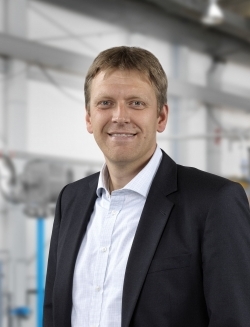
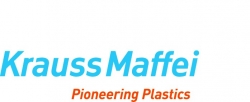

Mathias Zabel
global application and product owner - tire and rubber products
Kraussmaffei Extrusion GmbH
GERMANY

Synopsis: More steel and iron alone is not enough to help extrusion aggregates in times of IIoT. Subjects such as machine efficiency, sustainability and safety are more in focus than ever; the optimization of steel and iron alone will not lead to the goal of a smart extrusion aggregate. Condition monitoring ensures that the machine status is permanently recorded by measuring and analyzing specific variables such as volume flow or temperature to demonstrate an optimum level of system availability. Coupled with augmented reality, the operator is quickly and reliably shown how to remedy the cause, if necessary with the support of the machine manufacturer. With digital twin, it is also possible to monitor, predict and optimize products and systems before investing in assets. Finally, additional sensors such as pressure and humidity serve to extend the life cycle of an extrusion aggregate, if possible without the action of an operator.
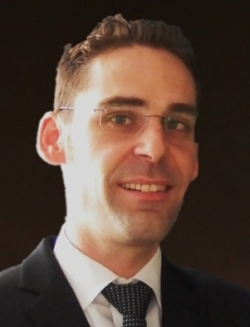


Marcel Gruendken
senior manager EMEA, MD&TS, R&D and regulatory affairs
Kuraray Europe GmbH
GERMANY

Synopsis: The presentation will discuss chemicals and innovations in the tire industry; differentiation of plasticizers, resins and polymers; co-reactivity with main polymers and interaction with fillers; Kuraray liquid rubber and applications in tires.
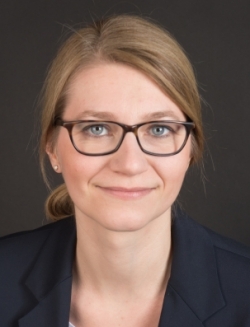
Antonia Albers
technical service EMEA
Lanxess Deutschland GmbH
GERMANY

Synopsis: Sustainability is evolving into one of the key topics in the tire industry. We at Rhein Chemie support our customers to successfully meet this new challenge with innovative products. These are either based on sustainable raw materials that enhance the sustainability of our customer products by, for example, improving lifetime or energy consumption, or support recycling at the end of the product lifetime.
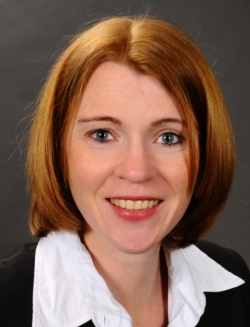
Melanie Wiedemeier-Jarad
technical service manager
Lanxess Deutschland GmbH
GERMANY

Synopsis: For the Rhein Chemie business unit at Lanxess, acting sustainably means being ready for the future. We are committed to comprehensive responsibility with regard to our products, and we keep up with regulatory uncertainties through regular assessment of our product portfolio based on sustainability criteria. Additionally, the search for environmentally friendly raw materials has increased in importance in tire manufacturing. This has motivated us to develop the new trial product Vulkacit TZ accelerator and the new trial product Vulkanox 4060 antidegradant with a more environmentally friendly profile. Both offer the advantage of easy handling and processing.
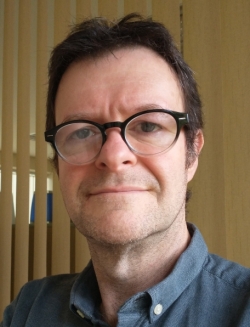
Paulo Porta
head of global application technology - auxiliaries
Lanxess SA
ARGENTINA

Synopsis: Lanxess’s Rhein Chemie business unit is currently the world’s largest supplier of additives for the rubber industry. Supplying solutions along the whole tire production process, the company invests effort in developing solutions to industry challenges and new trends. In this presentation, we introduce our Permanently Coated Bladders (PCB), a lean solution for manufacturing tires free of any traces of silicone on their innerliner. We will discuss what PCBs are, their main advantages and how production could benefit from them, together with some application examples.
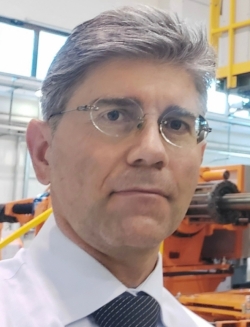
Massimo Lenti
technical director
Marangoni Machinery
ITALY
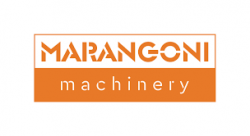
Synopsis: This presentation will discuss the development of new tire building machine architectures by leveraging new tooling, machine setup features and advanced HMI functionalities.
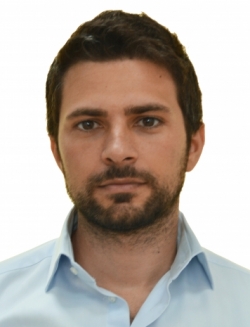
Flavio Farroni
CEO and co-founder
MegaRide - Applied Vehicle Research
ITALY
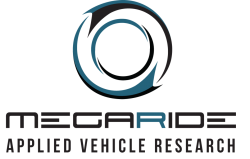
Synopsis: Thanks to the synergy between the scientific research context of the University of Naples and the startup company MegaRide, in recent years a robust methodology for the creation of a complete and multiphysical tire digital twin, starting from outdoor data, has been developed. The presentation will illustrate a six-week turnkey roadmap, describing the experimental and physical parameterization stages to be carried out to feed the MegaRide processing tools and calibrate the tire models that constitute the digital twin. The final output is a tire simulation platform, comprising an interaction, a thermal, a contact and a wear module, employable both in performance optimization ‘offline’ simulations and on real-time driving simulators.
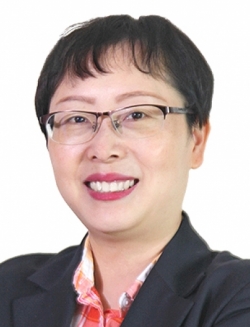
Lanfei Dong
technical director
MESNAC Co Ltd
CHINA

Synopsis: This presentation is about the tire RFID tag and will cover the following aspects: related international standards, whole solution of RFID tire, sharing practical experience, future development.

Karol Vanko
vice president
Mesnac European Research and Technical Centre
SLOVAKIA
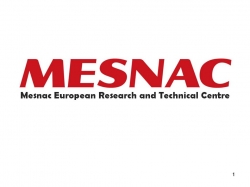
Synopsis: The Covid-19 pandemic has caused many problems for machine producers, mostly connected with travel restrictions. For example, machine commissioning, operator training and quick provision of maintenance have become difficult. What’s more, it happened before Industry 4.0 requirements for smart production were fully integrated into the tire industry. Mesnac has reacted to the situation with many new development projects, realized at Qingdao R&D and Slovakian MERTC R&D. Both teams are focused on new smart machine functionalities, augmented and virtual reality, predictive maintenance and research into the relationship between machine setting and final tire quality, based on big data and AI.
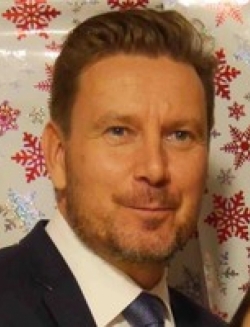
Cyrille Roget
scientific and innovation communication director
Michelin
FRANCE
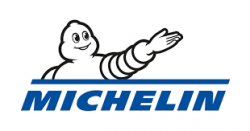
Synopsis: Having addressed for years the impact of tires on the environment through longevity and abrasion, rolling resistance, mass and LCA (life cycle analysis), Michelin is now preparing the next steps. LCA teaches us that use phase is a key driver of the impact of tires on the environment. But the on-going transition to electric mobility is highlighting that the next big contributor is raw material consumption. It is therefore essential to reduce the raw materials footprint on the Planet, contributing to a more Circular Economy. Michelin is working to ensure that this approach is complementary to the traditional tire performances as longevity and abrasion, rolling resistance, adherence, noise and handling. For each tire component, Michelin is working with a variety of approaches to bring a sustainable solution.
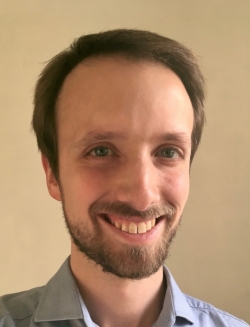
François Lohr
technical manager NVH tire performance
Michelin
FRANCE
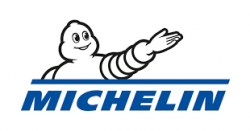
Synopsis: Tire road noise is an increasingly challenging topic in vehicle interior noise due to engine optimization and electrification. Optimized tire road noise relies on an adequate coupling between the tires and the vehicle, to avoid bad filtering or mode resonance. To speed up the tire-vehicle design process by using simulation instead of physical testing, Michelin has spent many years developing a tire NVH simulation chain, including road excitation, cavity and wheel. The virtual design and submission capability of this simulation chain will be presented, illustrated through tire-vehicle optimization and troubleshooting results.
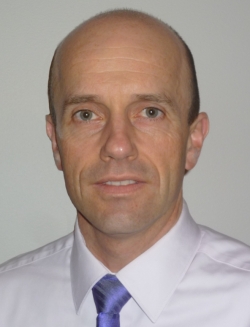
Frederic Biesse
tire performance analysis expert
Michelin
FRANCE
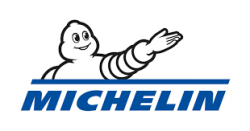
Synopsis: Although many tire performances improve with wear (rolling resistance, dry grip, etc), others, such as snow traction, decrease significantly. After presenting the stakes of mobility on snowy roads and the impact of wear on snow grip mechanisms and performance, the discussion will focus on the reproduction of this effect in analytical testing of worn tires. In particular, tire preparation is a key step and a process will be proposed. Finally, the capability of the classical snow grip methods to test worn tires with the proposed preparation protocol will be presented
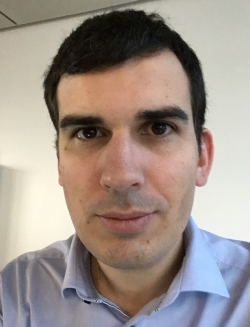
Jerome Barrand
tire ID program leader, connected mobility services
Michelin
FRANCE
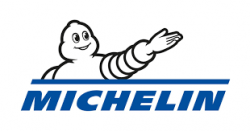
Synopsis: RFID tags embedded in tires ensure reliable tire identification (unique, unfalsifiable and permanently readable during the entire tire lifecycle). By associating tire ID with its digital twin, Michelin makes tires that ‘communicate’ by linking them to a more global ecosystem, to create infinite potential for innovations and added value for customers, sustainably. While Michelin continues to foster market adoption of RFID, discover how the technology can improve efficiency and enhance quality and trust throughout tire lifecycle: for tire manufacturers, country authorities, OEMs, dealers, end users and for end-of-life treatment.
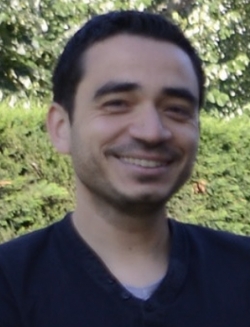
Nizar Didane
material designer
Michelin
FRANCE
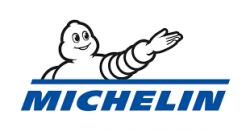
Synopsis: For the next few years, the tire industry will face demanding challenges, mainly in the areas of sustainability and long-lasting performance, leading to a strong need for appropriate technical solutions. To achieve this goal, Michelin invests considerable R&D resources in raw materials and final product comprehension studies. Considering textile reinforcements, the group has been involved in fundamental research around micro/mesoscales, such as single fibers. This methodology allows a better prediction of macroscale behavior. The presentation will highlight the micro/mesoscale analysis stakes and methodology. Important results related to the structure/property relationships of an aramid monofilament will also be shared.
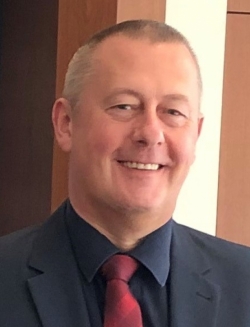
Yves Duytschaever
global sales manager, TRG
Milliken Textiles
BELGIUM

Synopsis: Ready-to-use (RTU) textile reinforcements are very important players when thinking about more sustainable processes. The ultimate green tire may still be a long shot but RTU reinforcements are within reach and can be applied at every tire plant with a direct impact on its environmental footprint. In combination with potential cost savings, applying RTU textiles shows immediate results without the need for significant investment.
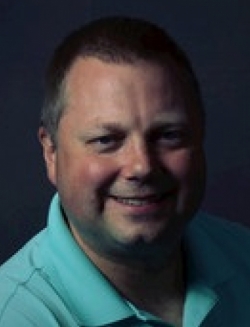
Anders Maki
systems engineer
MTS Systems Corporation
USA
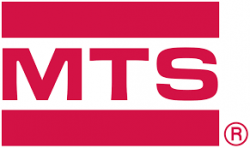
Synopsis: Do differences exist between flat-belt tire testing systems when measuring small forces and moments caused by tire plies? Every system can measure these forces but not equally: some are better than others, as this presentation will demonstrate.
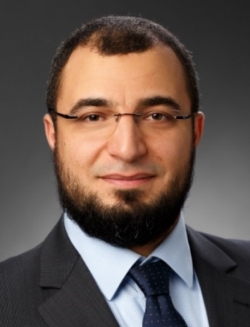
Sahbi Aloui
senior application engineer
Netzsch Gerätebau GmbH
GERMANY
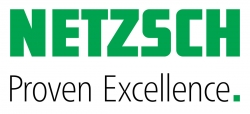
Synopsis: Dynamic-mechanical and dielectric analysis are well-established techniques to describe the material behavior on the macro and nanoscale respectively. Simultaneous combination of both techniques using the DiPLEXOR opens new opportunities to come closer to real applications during the operating phase by establishing the relationship between the macroscopic property change and the corresponding internal dynamics on the nanoscale. This represents the decisive criterion to understand why the samples are changing their properties during their service life. What is the criterion of cost efficiency? And can the mechanical state be continuously monitored during application in order to avoid damage and/or wear?
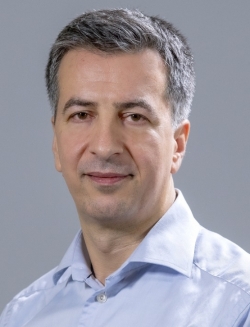
Kamyar Alavi
senior tech advisor
Nynas AB
SWEDEN

Synopsis: The tire industry’s efforts to achieve higher levels of sustainability has been gaining strength in recent years, which is reflected in the explicit sustainability targets communicated from several producers. Although the solution is multifaceted, the introduction of alternative raw materials for the production of tires has been one of the routes to meet the challenge. In this presentation, we will take a closer look at key raw materials such as polymers, fillers and plasticizers made from alternative resources, and discuss how they can be used as alternatives or complements to traditional raw materials.

Jake Norman
sales director
OAL
UK

Synopsis: Handling and weighing components by hand is a high cost for tire manufacturing businesses. Currently, many companies weigh out powders by hand, exposing operators to H&S risks while businesses suffer from human error and product failure. The presentation will share how advanced technology and robotics can address these issues by removing the human operator from the process. Following work with the University of Lincoln, OAL has developed and commercialized the APRIL Robotics Weighing System, which automatically stores and weighs out components to a works order.
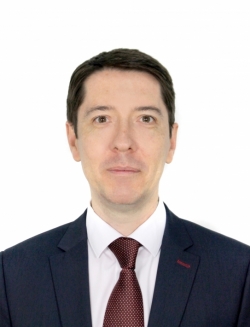
Andrey Bodrov
market development manager
Orgkhim BCH Management Company, JSC
RUSSIA

Synopsis: The trend of using bio-components is strengthening. The sustainability goals of rubber and tire makers are now based on green products from renewable raw materials. As a result, the number of eco-friendly tires and rubber goods targeting higher quality and the environmental requirements of consumers is growing. As a world-renowned TDAE process oil maker, Orgkhim actively develops Phytonorman bio-based oils to strengthen the sustainable growth of tire and rubber makers. Having mostly similar properties to aromatic oils, Phytonorman improves tire ice grip. The bio-oils effectively substitute DBP, widening application opportunities in rubber compounds. The oils are highly compatible with synthetic rubber.
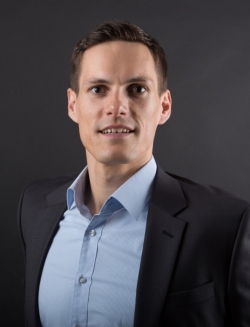


Andreas Morbitzer
key account manager - tire industry
Pepperl+Fuchs Vertrieb Deutschland GmbH
GERMANY

Synopsis: Today, the key to success is the intelligent combination of a large number of various field data, their direct integration and timely availability. Tire manufacturing is now able to leverage intelligent sensor data across all information levels. Sensorik4.0 offers a broad range of smart field devices including proximity switches, photoelectric sensors and RFID. At the same time, new opportunities for transmitting data have been introduced in industry, such as IO-Link, OPC UA and MQTT. For the tire industry, these standards offer a wide range of new advantages. The presentation will include conceptual and practical solutions for the tire industry.
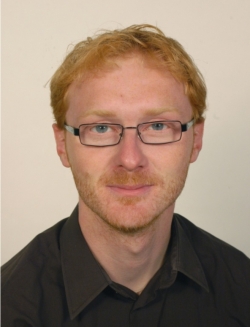
Radek Stoček
general manager
PRL Polymer Research Lab
CZECH REPUBLIC
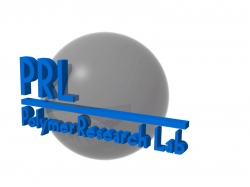
Synopsis: The successful development of highly cut- and chip-resistant tire treads requires improved rubber compounds based on new generations of raw materials and additives. Moreover, to make the development highly efficient and become a worldwide leader in this growing segment, the implementation of predictive lab testing methods is key. This will accelerate the development process before the tire has been produced, by speeding up the development times and minimizing cost-intensive field tests. We demonstrate a novel lab testing methodology, including the Instrumented Chip and Cut Analyzer equipment.
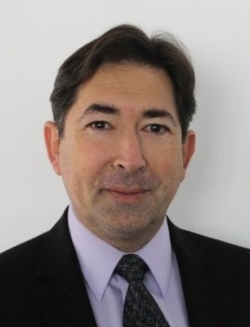
Selim Erhan
director of business development
Process Oils Inc, an Ergon Company
USA

Synopsis: Vegetable oils, derived directly from the beans and seeds of plants, provide a sustainable and renewable source of plasticizer for the rubber industry. However, they also provide several unique properties that result in significant performance benefits in processability and application properties. Their compatibility with higher-polarity elastomers such as SBR and BR makes them ideal for tire producers and industrial rubber products. This presentation will review the specific vegetable oils currently used widely in the rubber and tire industry and analyze their unique properties compared with traditional rubber process oils.
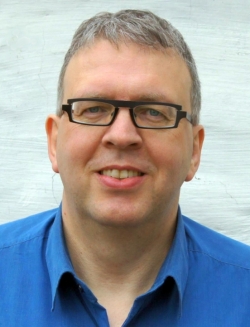
Koen Reybrouck
general manager
Reycon BV
BELGIUM
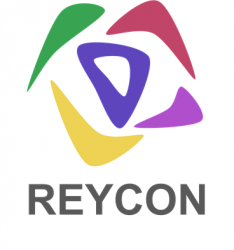
Synopsis: AI and sensor fusion on a XenomatiX XenoTrack lidar are used to measure and estimate the road surface properties (asphalt, concrete, pavement, etc), attributes (potholes, road markings, repairs, etc) and condition (dry, wet, snow, etc). This information is combined with a tire model to predict the tire grip levels ahead of the vehicle, while driving. This presentation discusses the measurements, training and validation of the AI algorithms, prediction results and the potential applications in AV path selection and advanced chassis system controls.



Bill Sarver
senior global industry consultant - automotive and tire
Rockwell Automation
USA

Synopsis: The tire industry is in a period of significant change. To stay competitive, you need smart, flexible, low-cost tire operations that can help you contend with challenges like scaling operations in response to consumer demand in a challenging economy, and maintaining operations with a potentially remote and changing workforce. Tire producers must also manage cost pressures resulting from more global competition and a tightening economy, with more SKUs to meet the needs of auto makers offering more tire options and new tire mixes that promote longevity but create production challenges. When expenses are being managed tightly and the options for digital technologies seem limitless, three digital solutions can have the biggest impact on your tire business. Join us to hear experts explain how a modern manufacturing execution system (MES), advanced analytics software and digital twin software can help you achieve your goals and remain globally competitive.
Synopsis: When expenses are being managed tightly and the options for digital technologies seem limitless, there are three digital solutions that can have the biggest impact on your tire business. Join us for this must-attend event and learn how these technologies can bring insights that enable personnel to make better design, operation and maintenance decisions. Understand how they can transform processes to reduce downtime, optimize speed and improve quality in tire production while enabling you to quickly scale your operations so that you can quickly respond to customer needs and market changes. Hear experts explain how a modern manufacturing execution system (MES), advanced analytics software and digital twin software can help you achieve your goals and remain globally competitive.
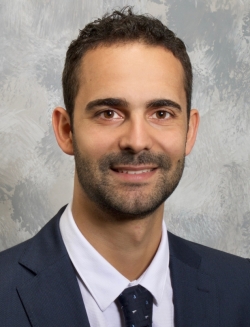
Cataldo Federico
global technical consultant
Rockwell Automation
ITALY

Synopsis: Integrated robotics is defined as the single line or cell controller controlling the robot, which eliminates the need for a dedicated robot controller and associated hardware components such as servo motors, drives, teach pendant and I/O. This is enabled by our latest processors and Kinetix 5700 servo drive with integrated safety on Ethernet/IP, which mitigates the need to separately wire the drive for safety. This reduces overall system wiring, saves time and money in installation and helps remove potential points of failure, thus resulting in less downtime and troubleshooting. Integrated safety provides the capability to change the safety zoning and configurations without needing to physically rewire the devices. Advanced safety features provide five safe stop functions and three safe monitoring functions. For robot-human protection, our new SafeZone 3 safety laser scanner adds the advantage of integration with a GuardLogix control system using an add-on profile in Studio 5000 Logix Designer.
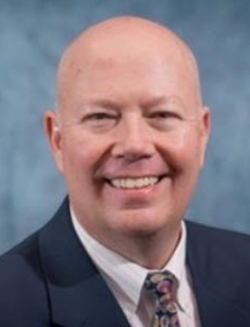
Dan Paul
global business leader - tire industry
Rockwell Automation
USA

Synopsis: The tire industry is in a period of significant change. To stay competitive, you need smart, flexible, low-cost tire operations that can help you contend with challenges like scaling operations in response to consumer demand in a challenging economy, and maintaining operations with a potentially remote and changing workforce. Tire producers must also manage cost pressures resulting from more global competition and a tightening economy, with more SKUs to meet the needs of auto makers offering more tire options and new tire mixes that promote longevity but create production challenges. When expenses are being managed tightly and the options for digital technologies seem limitless, three digital solutions can have the biggest impact on your tire business. Join us to hear experts explain how a modern manufacturing execution system (MES), advanced analytics software and digital twin software can help you achieve your goals and remain globally competitive.
Synopsis: When expenses are being managed tightly and the options for digital technologies seem limitless, there are three digital solutions that can have the biggest impact on your tire business. Join us for this must-attend event and learn how these technologies can bring insights that enable personnel to make better design, operation and maintenance decisions. Understand how they can transform processes to reduce downtime, optimize speed and improve quality in tire production while enabling you to quickly scale your operations so that you can quickly respond to customer needs and market changes. Hear experts explain how a modern manufacturing execution system (MES), advanced analytics software and digital twin software can help you achieve your goals and remain globally competitive.
Synopsis: It’s a crippling problem: around the world, tire production plants have seen KPIs like OEE, machine uptime and reliability worsen in recent years. Furthermore, unplanned downtime has been disrupting production and hurting the bottom line for tire makers. The problem? Corrosion. Specifically, atmospheric reactive compounds generated in the tire-making process are combining with temperature and humidity to cause corrosion on the electronic components in industrial control products. These reactive compounds aren’t new but they are having a bigger impact on modern control systems. This is why it’s critical that the steps you take and solutions you use to combat corrosion in your plants are based on an understanding of the unique factors that contribute to corrosion in tire environments. Rockwell Automation has invested years and significant resources to research corrosion-related component failures in tire environments. Join us for this must-attend event and learn how we worked with some of the world’s largest tire brands to identify and understand corrosion problems in their plants. Understand how we measured and analyzed environments in plants globally to identify the cause of corrosion and how we performed industry-standard accelerated corrosion testing on industrial control products made by us and our competitors. Attend this event and hear about how we’ve developed installation guidance, industrial control solutions and a first-of-its-kind corrosion test protocol representative of tire and rubber environments – all to help you improve uptime and stay productive.
Jordan Konst
global industry consultant
Rockwell Automation
USA

Synopsis: It is no secret that tire manufacturing is a very energy-intensive process. Manually collected energy data may be plagued with flaws, and historical reports may make it difficult to take meaningful action to achieve your energy goals. Industry 4.0 and digital transformation provide a unique opportunity to develop a comprehensive WAGES (water, air, gas, electricity and steam) management system. Collect WAGES consumption data from the factory floor, contextualize this data with production data in an IoT platform, and then take action in real time. Then optimize your energy efficiency further and reduce your overall costs by utilizing automated demand response, IoT, machine learning and artificial intelligence.
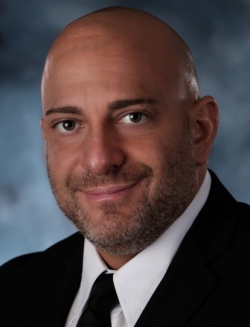
Paul Leone
principal engineer - quality and reliability
Rockwell Automation
USA

Synopsis: It’s a crippling problem: around the world, tire production plants have seen KPIs like OEE, machine uptime and reliability worsen in recent years. Furthermore, unplanned downtime has been disrupting production and hurting the bottom line for tire makers. The problem? Corrosion. Specifically, atmospheric reactive compounds generated in the tire-making process are combining with temperature and humidity to cause corrosion on the electronic components in industrial control products. These reactive compounds aren’t new but they are having a bigger impact on modern control systems. This is why it’s critical that the steps you take and solutions you use to combat corrosion in your plants are based on an understanding of the unique factors that contribute to corrosion in tire environments. Rockwell Automation has invested years and significant resources to research corrosion-related component failures in tire environments. Join us for this must-attend event and learn how we worked with some of the world’s largest tire brands to identify and understand corrosion problems in their plants. Understand how we measured and analyzed environments in plants globally to identify the cause of corrosion and how we performed industry-standard accelerated corrosion testing on industrial control products made by us and our competitors. Attend this event and hear about how we’ve developed installation guidance, industrial control solutions and a first-of-its-kind corrosion test protocol representative of tire and rubber environments – all to help you improve uptime and stay productive.
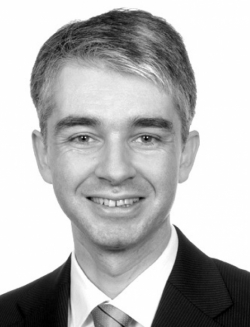


Pierre Paterni
connected services - business development team lead - EMEA
Rockwell Automation
FRANCE

Synopsis: A fully connected tire enterprise requires a comprehensive approach to industrial cybersecurity. This includes policies and procedures that address people, processes and technology-related risks. It is critical to understand the potential risks and start building security into your industrial automation control systems. Join us to learn how to manage potential threats and build a more secure industrial control system, with a defense-in-depth security approach that addresses internal and external security threats.
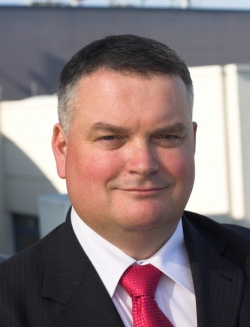
Colin Clarke
director technical sales
Schill + Seilacher Struktol GmbH
GERMANY

Synopsis: Tire molding demands specific performance criteria at the tire-mold and tire-bladder interfaces. Progressive initiatives toward increasing the efficiency of the molding operation have resulted in increased vulcanization temperature as well as the introduction of new types of bladder coating and even novel systems for mold cleaning. The presentation will look at options to improve the bladder performance as well as mold coating systems and their contribution toward mold maintenance and tire aesthetics. The development of new chemical types applied to these critical interfaces yields further opportunities for even greater efficiency in the molding operation. The presentation will highlight that mold and bladder productivity extension is possible, while the use of consumable or sacrificial lubricants is eliminated.
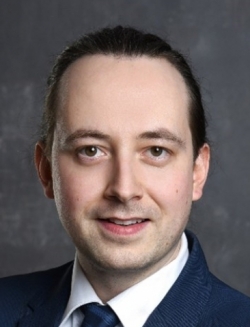


Christian Geidel
head of R&D and Application Laboratory
Schill+Seilacher Struktol GmbH
GERMANY

Synopsis: State-of-the-art tread compounds need to fulfill a great variety of performance criteria to meet modern end-customer requirements. Tread grip, traction and highly tuned tire handling are finely balanced with the expectation of decreased tread wear and an increasing contribution toward vehicle fuel efficiency. These constraints are further stretched for those tires developed for use on e-vehicles. End-user expectations translate to the need for ever more demanding material concepts comprising high-molecular-weight rubbers in conjunction with high filler and resin levels. As a result, the tire production process efficiency is compromised due to unacceptably high viscosity, low green strength and challenging levels of tack at key stages throughout the production process. Struktol has recently developed solutions to overcome the performance vs. processing target conflict. This presentation will outline opportunities enabling future-oriented material development to push performance to higher levels without sacrificing processing efficiency.
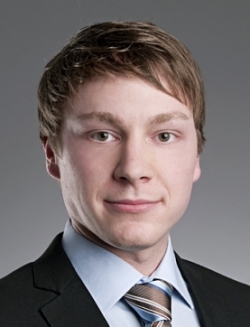
Patrick Hartmann
strategic industry manager
Sick AG
GERMANY
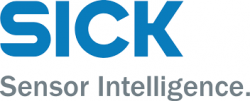
Synopsis: Production and intralogistics in harmony. Once considered two distinct disciplines, now these areas are growing closer thanks to advances in automation and digitization. The goal is to make the material flow and the production process itself completely transparent. With intelligent sensor solutions, all steps – from the raw materials being delivered, through the various production processes, to delivering the finished tire – can be monitored at all times. Using that information and the additional information that many sensors can supply, the prerequisites for a smart, networked production facility are created.
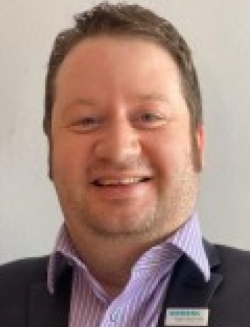
Lee Wragg
global business development manager RTLS
Siemens
UK
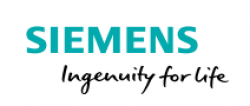
Synopsis: Real-time locating systems are increasingly critical to businesses that need to link their physical assets to their digital counterparts, providing accurate data on where they are right now and where they have been. This presentation shows some use cases to reduce search time and optimize material flow with dynamic, real-time locating data for each and every relevant asset in the tire factory. With the latest reliable locating solutions, which operate in harsh environmental conditions, you get full transparency and automatic notifications to optimize the material workflow in tire production.
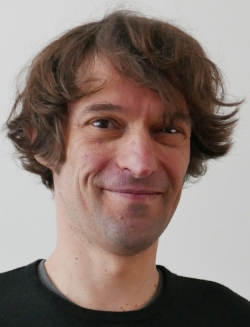
Carlo Lugaro
research engineer
Siemens Digital Industries Software
NETHERLANDS
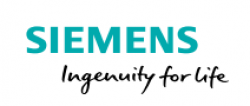
Synopsis: Simplified physical tire models are useful to predict and study the generation of forces and moments in different operating conditions. A crucial element of these models lies in the prediction of the deformation of the tire structural elements during operation, which is difficult to determine experimentally. In this study, an optical measurement system based on a camera positioned inside the tire is applied, thus permitting direct measurement of such deformations. The method provides a correlation between side slip angle, tire deformations and lateral force to facilitate the experimental validation and further development of physical tire models.
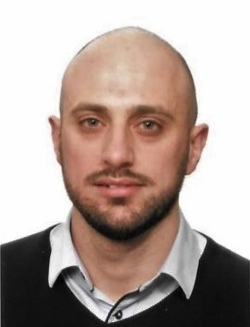
Francesco Todino
research engineer
Siemens Digital Industries Software
NETHERLANDS
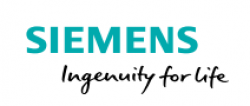
Synopsis: The effect of temperature and rolling speed on the tire response has been widely studied in recent years. Tire models that capture these phenomena have lately become available in the literature. Parameterization of such models requires knowledge regarding properties of the tire construction materials, which can be time-consuming and expensive. In this study, an efficient parameterization method and measuring strategy, based on a novel tire thermodynamic extension, is proposed that solely relies on a set of forces and moments measurements, complemented with temperature sensors. The validation results demonstrate the effectiveness of the designed methodology.
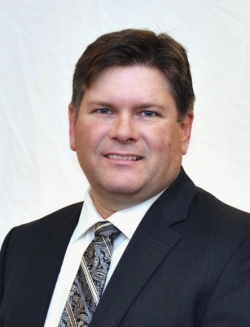
Bill Henderson
USA tire head
Siemens Industry Inc
USA
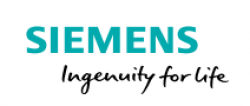
Synopsis: Leverage technology to manage your uptime by correlating the manufacturing process models with your operational quality data to modify your manufacturing process in real time. Using real-world inputs and cloud interfaces, you can leverage the data you already have in your process to optimize your production. This presentation will discuss augmented solutions for your current control system with cloud-based and cloud-enabled technologies to capture production data and optimize ongoing processes. With the latest in automation technology coupled with digital assets, you can participate in the digital transformation of the tire industry now, and futureproof your manufacturing processes.



Vaidehi Gupta
global head-digital manufacturing
Smart Controls India Limited, Member of Zeppelin Group
INDIA

Synopsis: We all know that tire manufacturing is a discrete type of manufacturing industry where the link between machines and product is filled by people. This imposes tremendous challenges in running the plant efficiently and smartly. To overcome these challenges, Industry 4.0 along with data science has to be adapted so that machines talk directly to machines and the product tells the machine how to process it. Each product or batch has to closely resemble the ‘golden batch’, maintaining consistent quality. Data science plays a big role in terms of machine learning for constantly improving the end product.
Laurent Guy
global technical marketing for tire market
Solvay Silica
FRANCE
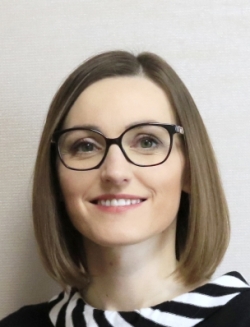
Natalia Gajos
global technical marketing manager - tire
Solvay Silica
FRANCE
Synopsis: Molecular modeling and simulation have become powerful tools for optimizing tire materials and predicting tire behavior. The current limitation of the simulation approaches for silica-reinforced rubber is the lack of precise description of the silica nature and the atomistic interface. In this session, a joint effort by Solvay and Sumitomo Rubber, a new simulation approach for silica-reinforced rubber will be presented, which is based on ab-initio and coarse-grained simulations. The real silica surface is simulated by all-atom reactive force field molecular dynamics, and the impact of the silica interface on the viscoelastic properties is evaluated by coarse-grained simulation.
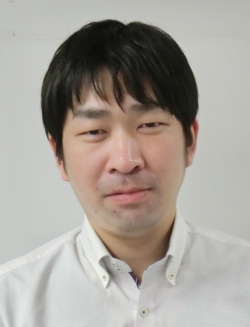
Tomofumi Zushi
development engineer
Sumitomo Rubber Industries
JAPAN
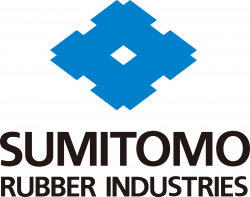
Synopsis: Molecular modeling and simulation have become powerful tools for optimizing tire materials and predicting tire behavior. The current limitation of the simulation approaches for silica-reinforced rubber is the lack of precise description of the silica nature and the atomistic interface. In this session, a joint effort by Solvay and Sumitomo Rubber, a new simulation approach for silica-reinforced rubber will be presented, which is based on ab-initio and coarse-grained simulations. The real silica surface is simulated by all-atom reactive force field molecular dynamics, and the impact of the silica interface on the viscoelastic properties is evaluated by coarse-grained simulation.
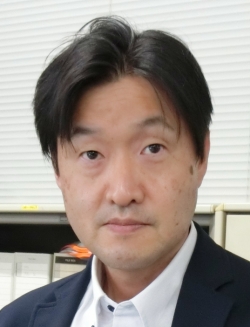
Masaya Tsunoda
general manager
Sumitomo Rubber Industries Ltd
JAPAN
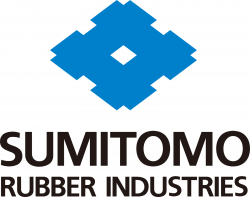
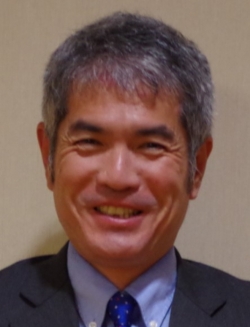
Toshio Tada
general manager
Sumitomo Rubber Industries Ltd
JAPAN
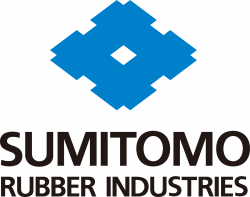
Haluk Kizilay
managing director
TIC-Tire Industry Consulting
TURKEY
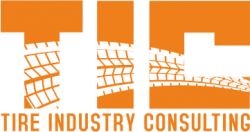
Synopsis: The presentation will discuss the requirements in today’s tire industry for TBR; the main drivers in truck and bus tires; how to enhance product design and development; key factors in TBR design; TBR technical challenges.
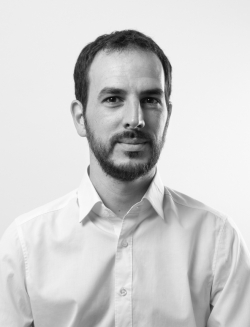
Nicolas Schüwer
R&D manager
Tyre Recycling Solutions
SWITZERLAND

Synopsis: The problems associated with tire recycling remain a technological challenge and a threat to our society. Yet the responsible management and valorization of end-of-life tires is of growing concern and achieving their recyclability is demanded by end customers and manufacturers. This presentation describes how recycled waterjet rubber powders can be formulated back into tire rubber compounds while maintaining the required high performance and having a positive impact on the tire carbon footprint. It further provides technical insight on the fundamentals of waterjet rubber powder compounding and details strategies to localize the production of high-quality eco-responsible materials.
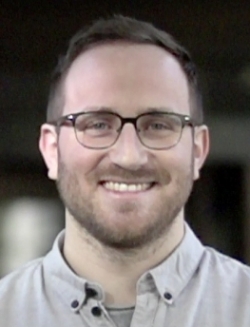


Stefan Frosch
laboratory engineer
University of Applied Sciences Würzburg-Schweinfurt
GERMANY

Synopsis: Recycling end-of-life rubber products is a challenging task. One possibility is to reuse ground rubber particles (GRP) as a filler for virgin material. However, this recycled material leads to a reduction in rubber properties in comparison with new compounds. One reason is that sulfur is migrating from the matrix into the GRP, which most likely reduces the cross-link density of the surrounding matrix material. Micro x-ray fluorescence analysis (µ-XRF) reveals this diffusion effect and illustrates chemical element distributions on a scale of several square centimeters. Additionally, these concentration differences can be quantified with newly developed methods.
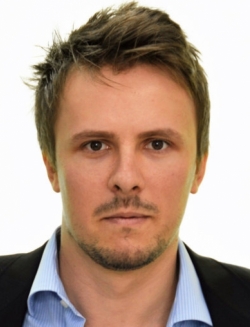
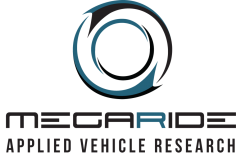

Aleksandr Sakhnevych
vehicle dynamics researcher | CTO
University of Naples Federico II | MegaRide
ITALY

Synopsis: RIDEsuite enables a further necessary step toward the real-time modeling of tire-road interaction phenomena in offline and online environments. The software products – consisting of a high-performance full wheel thermal model, a dynamic Magic Formula based model, a multi-contact envelope-based model and a wear degradation model – are perfectly integrated into a plug-and-play solution, and also allow the partners to perform hybrid simulations with their own third-party modules thanks to the specially designed modular APIs. RIDEsuite is a completely modular system that can enhance real-time simulation for tire performance and vehicle setup optimization and help vehicle dynamicists achieve automotive excellence.
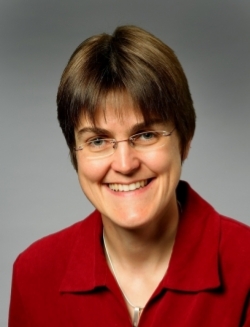
Anke Blume
professor
University of Twente
NETHERLANDS

Synopsis: The introduction of the silica/silane system in NR is still a challenging task. There are different approaches to achieve a good dispersion level of the silica and a sufficient coupling rate of the silica to the polymer. One of them is the use of masterbatches where the silica is already pre-dispersed in the NR latex. A crucial factor in all rubber compounds is their aging behavior. In the current study, the aging behavior of rubber compounds that are produced with different silica/silane NR masterbatches is investigated in depth.

Arqam Anjum
PhD student
University of Twente
NETHERLANDS

Synopsis: The aim of this study is to understand the different nature of pyrolysis carbon black compared with virgin carbon black. The current investigation is based on the influence of pyrolysis process parameters on the pCB material properties that are responsible for its reinforcing potential, including overall morphology and structure, and surface properties. Furthermore, the in-rubber performance of pCBs was evaluated and compared with the performance of virgin carbon black.

Balan Ramani
PhD researcher
University of Twente
NETHERLANDS
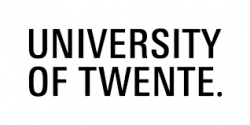
Synopsis: Pyrolysis is a promising technology for waste-tire recycling, but current technologies have their limitations due to the low quality of products recovered during the process. A better understanding of the process is required to improve the quality of tire pyrolysis products. In this study, tire granulates are treated via an innovative pyrolysis process to determine the influence of process parameters on the yield and properties of the pyrolysis products, i.e. pyrolytic carbon black (pCB), oil and gas. The pCB is compared with commercial carbon black in terms of physical and chemical properties, and almost comparable products are produced by this technology.



Fabian Grunert
assistant professor, Elastomer Technology & Engineering Group
University of Twente
NETHERLANDS

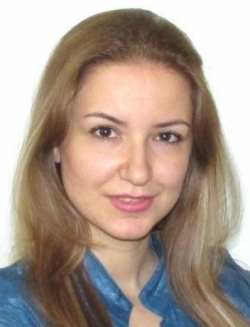
Marzieh Salehi
researcher
University of Twente
NETHERLANDS

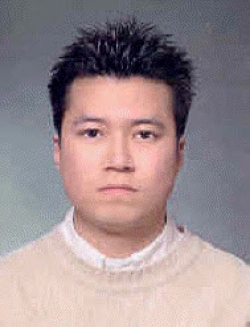
Sunkeun Kim
PhD researcher
University of Twente
NETHERLANDS

Synopsis: Silica-silane is a commonly used filler system in elastomer technology. However, there are drawbacks to this technology: processing of the silica-filled compounds is complex, and this filler system does not work properly for all applications. To overcome the drawbacks of the silica-silane system, alternative surface pre-treatment techniques were investigated. The characteristics of the modified silica types as such as well as in their application will be discussed.
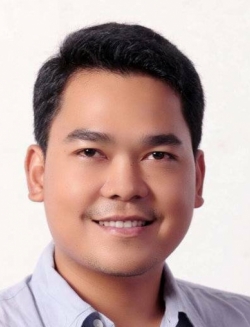
Wisut Kaewsakul
assistant professor
University of Twente
NETHERLANDS
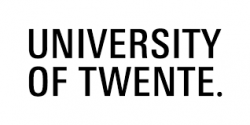
Synopsis: To improve the properties of silica truck tire tread compounds, especially abrasion resistance, the effects of organoclay (OC) and carbon black (CB) N134 as secondary fillers as well as butadiene rubber (BR) and solution styrene butadiene rubber (SSBR) as secondary polymers in silica-filled natural rubber (NR) compounds at a ratio of 80/20 phr were investigated. The use of OC shows improvement in Payne effect and tan delta at 60ºC, indicative of reduced filler-filler networking, and rolling resistance of the compound, respectively, compared with the one without OC. Overall, the combination of BR and OC shows the best tire performance.
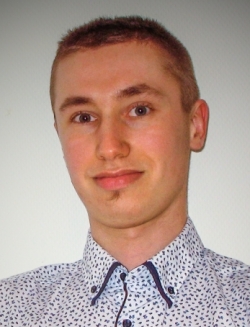
Marcin Sęk
PhD student
University of Twente / Apollo Tyres Global R&D B.V
NETHERLANDS
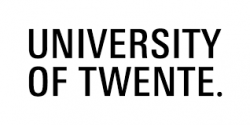
Synopsis: Analysis of the cross-link density and cross-link structure of rubber vulcanizates is a crucial issue. The Temperature Scanning Stress Relaxation (TSSR) technique has been developed for this practical analysis with a solventless system. This presentation reports recent results measured by TSSR with an emphasis on challenges and opportunities for measurement.

Gina Butuc
PhD candidate
University of Twente/Nouryon
NETHERLANDS
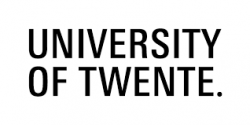
Synopsis: This research proposes a novel approach to decrease EPDM and EPM absorption of hydrocarbon solvents and oils by creating polymer blends with a low-molecular-weight polymeric material – a cyclic oligosulfide containing at least one tetrasulfide group in the molecule. The focus of this paper is on a proposed mechanism of cross-linking facilitated by both organic peroxide and sulfur; sulfur is generated in-situ by the cyclic tetrasulfide. An important role is played by ZnO in elucidating the mechanism of cross-linking. The ZnO surface chemistry influence on the sulfur cross-link process is studied by various microscopy techniques coupled with energy-dispersive x-ray.
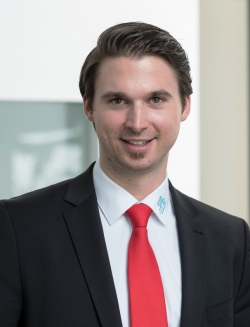
Manuel Bessler
general manager sales and project management
UTH GmbH
GERMANY
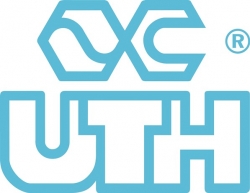
Synopsis: Requirements for tire compounds have been continually growing for the tire industry during the past few years, while the pressure to contain costs has significantly increased. Many tire manufacturers have recognized that fine mesh straining of master or final batch improves the quality of the tire compounds by filtering impurities and non-mixed ingredients, with a positive effect on the manufacturing process. The Roll-Ex gear extruder technology allows particularly gentle straining and extrusion of tire compound in the mixing line with output rates up to 10,000kg/h and the use of extremely fine screens.
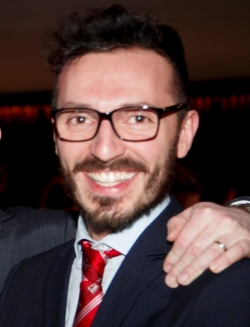
Antonio Solito
researcher, leader S-SBR and BR
Versalis
ITALY

Synopsis: Tires move the world, and the world revolving around tires needs to keep pace but with increased consciousness of the impact on climate change. Despite the complex situation caused by the pandemic, Versalis’s parent company, ENI, this year announced a strong commitment to reach carbon neutrality by 2050. How can we support this environmental drive? Functionalization of S-SBR has led the way to enhanced rubber-silica interactions and excellent filler dispersion stretching out the vertices of the performance magic triangle (RR ↓, WG↑, Abrasion↓). However, functionalization can be a double-edged sword: reactivity and stability must be carefully balanced to achieve tangible improvements.
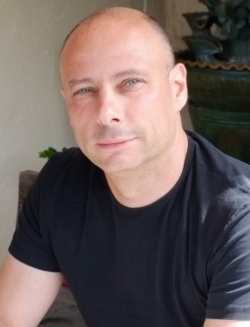
Fabio Bacchelli
technical manager
Versalis
ITALY

Synopsis: High-cis neodymium polybutadiene is known to be a high-performing, very elastic polymer, with better vulcanizate performance than corresponding Ni, Co and Ti grades. However, despite superior mechanical and hysteretic properties, processing may become challenging, as often seen, for example, in rough extrudates. Slower extrusion speeds, lower processing temperatures and the addition of processing aids are therefore required to improve Nd-BR processability at higher costs. This conflict between superior vulcanizate performance and challenging processing behavior may be overcome by targeting a specially designed molecular architecture directly obtained during polymerization.
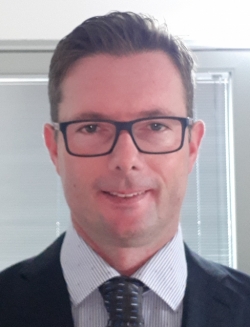


Costantino Perretta
elastomer R&D product manager automotive, thermoplastic, compounding and circular economy
Versalis SpA
ITALY

Synopsis: End-of-life tires (ELT) have been recognized as a critical and valuable resource for the circular economy. The secondary raw material derived from ELT can be an important solution to meet the targets of CO2 reduction, which many tire manufacturers have set in their strategy for the coming years. Versalis is studying the technologies of devulcanization and micronization, aiming to optimize the physical and chemical properties of the recycled material and reuse it in new sustainable tires. With this new circular economy initiative, Versalis aims to expand the range of Versalis Revive products, which are made of recycled materials from post-consumer products and thus meet the growing circular economy needs of manufacturers of tires and other rubber products. The presentation provides the technical results that Versalis has achieved with both technologies.
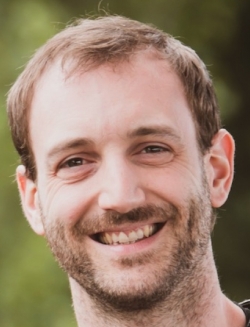
Mathieu Grob
pre-sales manager
VI-grade
FRANCE

Synopsis: VI-grade strongly believes in innovation and has recently launched a new family of cable-driven simulators characterized by extended workspace, as well as a complete driving simulator product line dedicated to NVH applications. VI-grade also recently launched the VI-Certified program, which guarantees enhanced driving simulator compatibility with most third-party software providers. In particular, this program ensures native integration of all major tire models on the market (MF-Tyre, CDTire, FTire and MegaRide). The presentation will reveal VI-grade’s complete and open solution to support and develop a fast and efficient process for virtual tire design, testing and sign-off.
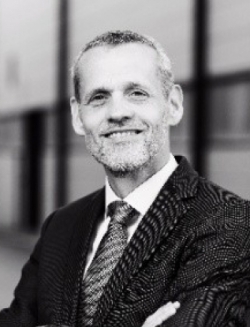
Jan Grashuis
VP global product management
VMI Group
NETHERLANDS

Synopsis: Recent years have seen an ever-increasing number of tire specifications that have to be managed by tire factories. It is challenging to keep the output at required levels, while batches get shorter and more size changes have to be made at every step of the process. This requires flexible solutions so that equipment can produce at the lowest cost per tire in smaller production runs. In this talk, VMI discusses the value of new, flexible solutions that enable a new approach to inventory management, demand planning and reduction of waste.
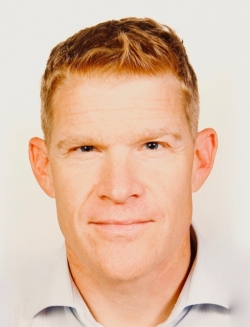
Martin von Wolfersdorff
principal advisor
Wolfersdorff Consulting Berlin
GERMANY
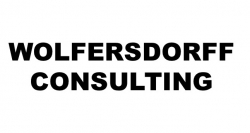
Synopsis: This global update on tire recycling and tire pyrolysis will include a global projects update and an innovation and technology update with a focus on tire-to-tire recycling.
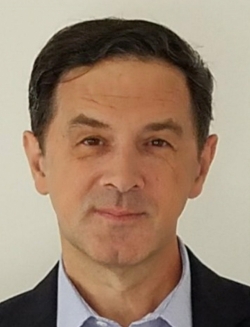
Zoran Markovic
business development and technical manager
ZC Rubber
CHINA
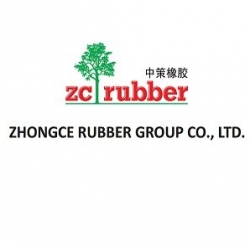
Synopsis: This session will describe tire failure modes on radial and bias tires for various applications, including their potential causes, identification and the sometimes subtle nuances that go along with determining tire failure. The session will be helpful for investigators and individuals who need to explore and explain tire failures and point out the contributory factors. It will help to clarify failure root cause between tire production process deviation, tire design and service application, and explain the most common problems/issues related to tire handling.
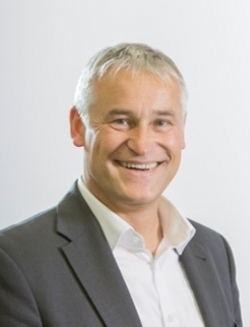
Guido Veit
vice president projects
Zeppelin Systems GmbH
GERMANY

Synopsis: Calling on its strength and experience in process and plant engineering, Zeppelin offers customers innovative bespoke solutions for the recycling of used tires. Zeppelin continuously strives for process reliability and consistently high-quality final products – decisive contributory factors for the provision of long-term profitability and sustainability for its customers. Through partnering with a renowned institute, Zeppelin develops and evolves cutting-edge solutions by implementing creative and economical processes to recover and recycle valuable steel, oil and gas and to regenerate premium-grade carbon black. These highly sustainable ‘self-powering’ plants help to reduce the used tire mountains and create a more sustainable future.
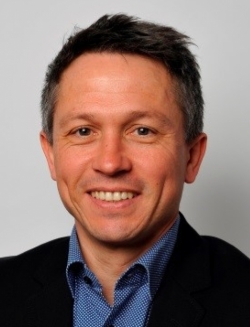
Hans Schneider
general manager process technology
Zeppelin Systems GmbH
GERMANY

Synopsis: The integrated tire factory requires a high degree of automation. Consecutive process steps in the production must be intelligently connected with each other. In addition to the controls, software and communication between the subsystems, it is a prerequisite that every single process step is robust and designed to provide the desired flexibility. However, in the raw material supply and dosing systems for the mixing room, there are still special requirements and limitations due to the varying properties of the powders or liquids in the recipes. Continuous improvement of these process steps enables production with better quality and higher output. This presentation will address the conveying of carbon black and the dosing of liquid additives. The Overflow Bypass technology for pneumatic dense phase conveying of carbon black and silica has been proved for more than two decades. It has been developed further with a new feature that allows online remote adjustment of the bypass valves along the conveying line. This development makes the base technology smart, resulting in higher flexibility for raw materials and improved carbon black and silica quality for feeding the rubber mixer. With the new Liquid Dosing System (LDS), handling of up to 36 liquid additives can be modularly implemented. The LDS provides highly accurate liquid injection into the mixer and at the same time avoids cross-contamination of the different components.